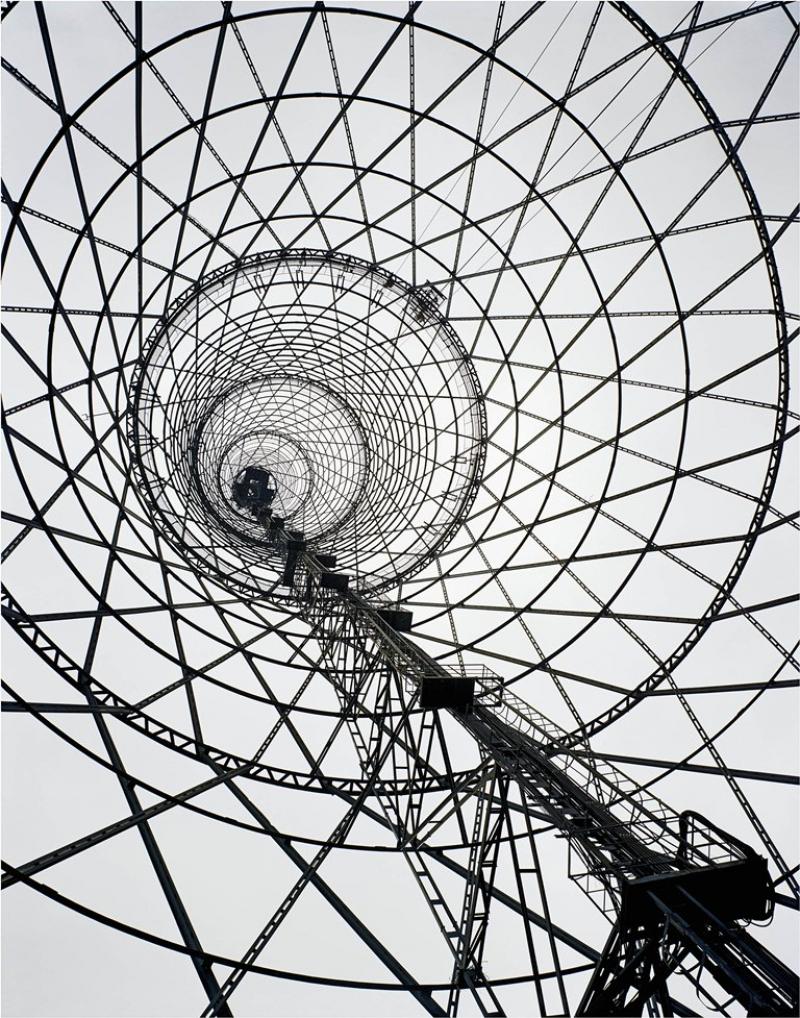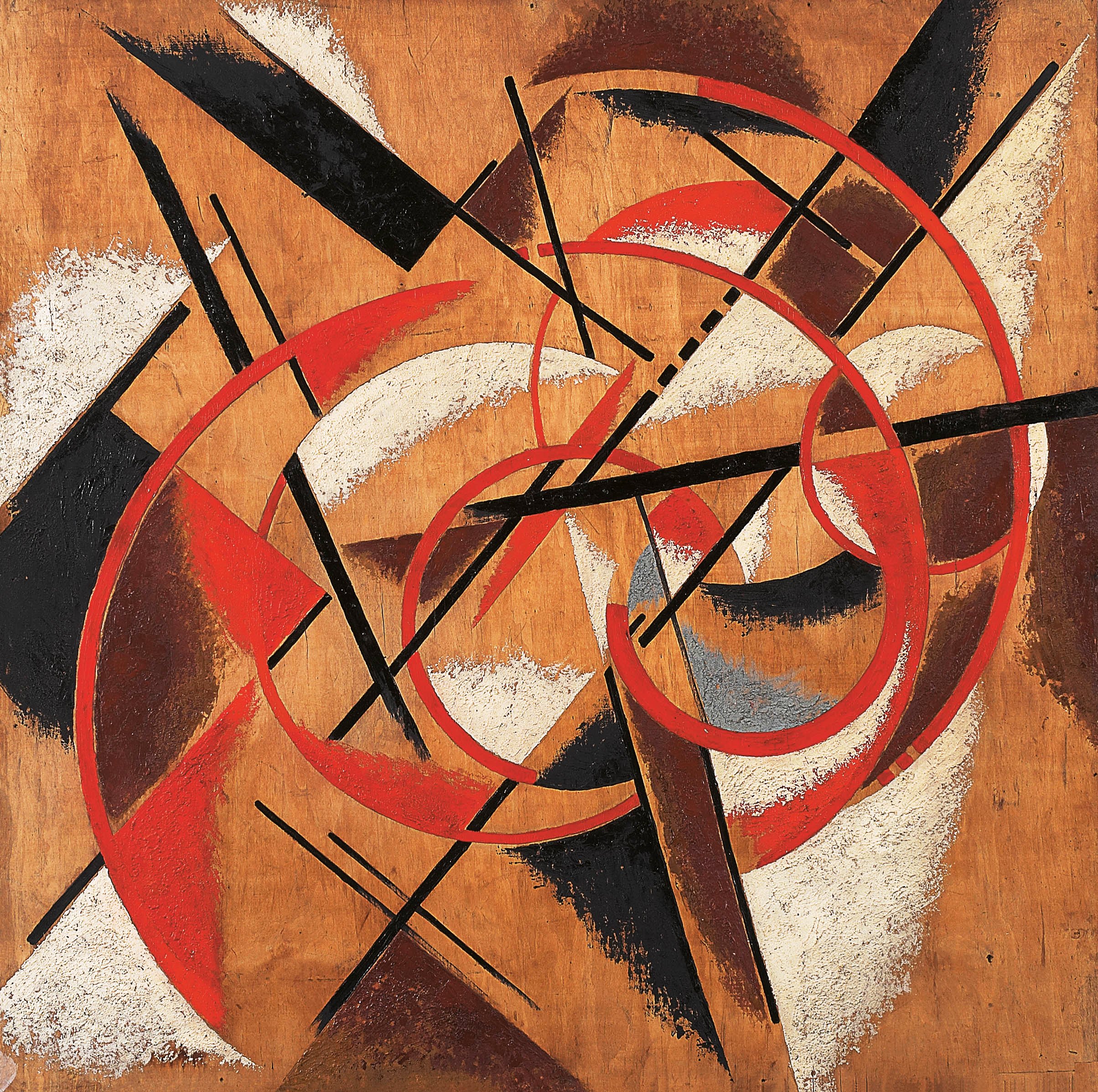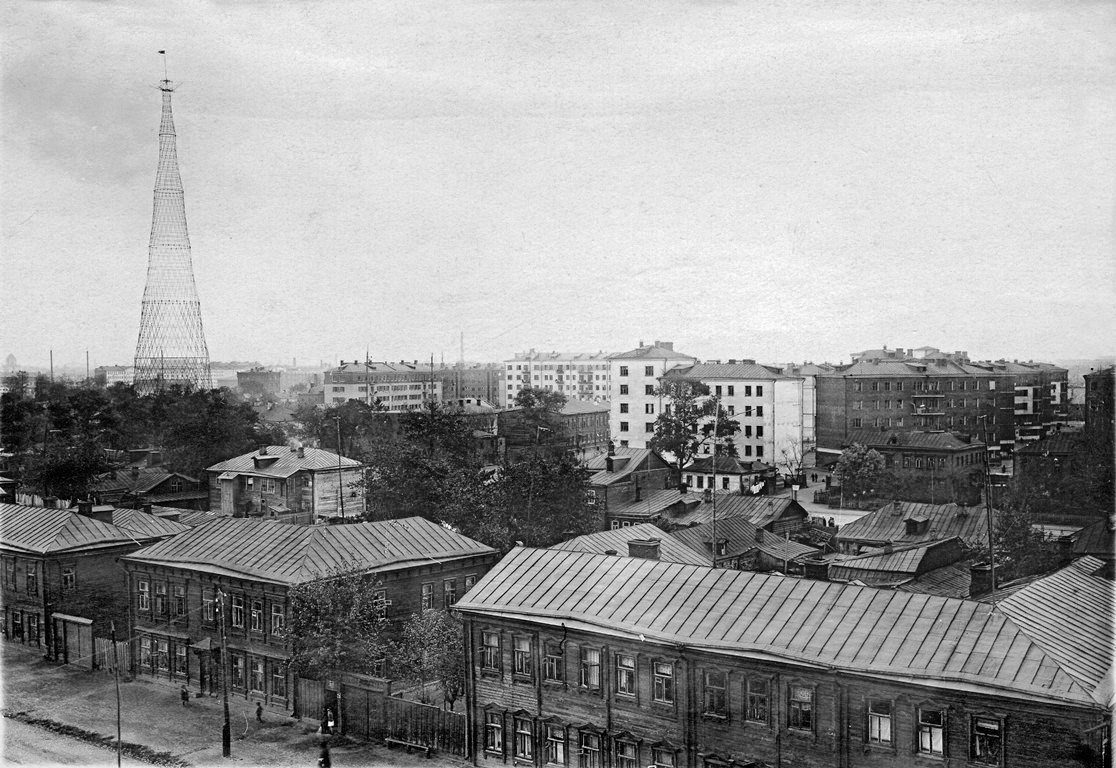Building the Revolution: Soviet Art and Architecture, 1915-1935, Royal Academy | reviews, news & interviews
Building the Revolution: Soviet Art and Architecture, 1915-1935, Royal Academy
Building the Revolution: Soviet Art and Architecture, 1915-1935, Royal Academy
Aesthetically mind-blowing. But morally compromised?

I’m not sure I’ve ever felt so ambivalent about a show, and so strongly both pro and con. The pros first, then. This is an astonishing, revelatory exhibition of avant-garde art and architecture in the Soviet Union in the brief but hectic period from the Revolution to the Stalinist crackdown in the 1930s.
In the first decades of the 20th century, following the lead of pioneers like Malevich, Suprematist artists set out to free pictorial space from the requirements of the real, using, firstly, a square floating in space, followed by other geometrical shapes. This revolutionary concept was taken up after the actual Revolution, and the Constructivists then began to approach the notion of space itself: what did it mean? How could it be defined? Vladimir Tatlin aimed to create “purely artistic forms with utilitarian intentions”, and his planned, but never built, Monument to the Third International (1919), a ziggurat-like steel tower was intended to house the Comintern - each floor was going to revolve separately. (Under the architect Jeremy Dixon, the Royal Academy has erected a replica in their forecourt.)
 As Lenin’s New Economic Policy injected capital into the state economy in the early 1920s, a building boom opened up opportunities for architects to work with the theories of these artists and evolve new building types to meet the needs of the new socialist state – communal housing, mass-production factories, workers’ clubs and more. Avant-garde architects, including Le Corbusier and Erich Mendelsohn (later, as a refugee from Nazi Germany, one of the architects of the De La Warr pavilion in Bexhill-on-Sea), were invited to contribute and “the heroic years of Soviet architecture” began.
As Lenin’s New Economic Policy injected capital into the state economy in the early 1920s, a building boom opened up opportunities for architects to work with the theories of these artists and evolve new building types to meet the needs of the new socialist state – communal housing, mass-production factories, workers’ clubs and more. Avant-garde architects, including Le Corbusier and Erich Mendelsohn (later, as a refugee from Nazi Germany, one of the architects of the De La Warr pavilion in Bexhill-on-Sea), were invited to contribute and “the heroic years of Soviet architecture” began.
The opening of the exhibition could not be more thrilling if it tried: a fabulous Rodchenko, Linearism, the all-too-overlooked Gustav Klutsis’s Dynamic City, and an amazing Liubov Popova, Spatial Force Construction (pictured above right, State Museum of Contemporary Art/G Costakis Collection, Thessaloniki, Greece), made of oil paint and marble dust, just glow.
They are, however, almost (almost) cast into the shade by Richard Pare’s vertiginous photograph (main picture, above) of the first permanent industrial structure to be built in Russia after 1917, the Shabolovka Radio Tower, designed in 1922 by Vladimir Shukhov. Its elegant steel trussses floated high over the still low-rise skyline of Moscow, and the archival images (pictured below, Havski-Shabolovskii residential block, with Shabolovka Radio Tower, photographer unknown, 1929, Dept of Photographs, Schusev State Museum of Architecture, Moscow) and Pare’s extraordinary interior shot show how stark its modernity must have appeared at the time.
 The architectural and artistic responses to the needs of industry, housing, education, propaganda, health and recreation then develop. The Narvski Factory kitchen embodies the new world order where communal feeding enabled women to join the workforce by ensuring that they no longer needed to stay at home to produce meals for their men.
The architectural and artistic responses to the needs of industry, housing, education, propaganda, health and recreation then develop. The Narvski Factory kitchen embodies the new world order where communal feeding enabled women to join the workforce by ensuring that they no longer needed to stay at home to produce meals for their men.
While the politics and pragmatism are on display in the archival material, Richard Pare manages to infuse his photographs with a delicate and touching domestic reality (Rusakov Workers' Club, pictured below, photograph Richard Pare, 1995, courtesy Kicken, Berlin © Richard Pare). The DenproGES hydroelectric dam and power station’s majestic turbine hall has a small clutch of seedlings being grown on a trestle table set out by the starkly modern windows, a worker’s contribution, no doubt, while the railings, which must have appeared astonishingly modern in 1927, today seem quaintly old world with their decorative brackets.
 It is further on that doubts begin first to creep, then to gallop in. There is never, at any point, any question of the aesthetic value of what is on show. That is peerless. But when one looks at photographs of mass-production bakeries, and reads the captions stating that in the 1930s these were created to feed the workers, without any mention of the tens of millions of fellow workers who were being starved to death by the very same state that was building these model factories, well, one would wish for more editorial comment from the exhibition’s curators.
It is further on that doubts begin first to creep, then to gallop in. There is never, at any point, any question of the aesthetic value of what is on show. That is peerless. But when one looks at photographs of mass-production bakeries, and reads the captions stating that in the 1930s these were created to feed the workers, without any mention of the tens of millions of fellow workers who were being starved to death by the very same state that was building these model factories, well, one would wish for more editorial comment from the exhibition’s curators.
And when it comes to admiring the (admittedly wonderful) swooping white stucco curves of Ivan Antonov, Veniamin Sokolov and Arsenii Tumbasov’s housing scheme in Ekaterinburg, I reached my limit. To show the offices of the Cheka – the state security force that tortured and murdered, was responsible for the Gulag camps where millions more died, the organisation run by the psychopathic mass-murderer Feliks Dzherzhinsky – and only note that the building had a kindergarten, a playgroup and a hairdresser, seems to me to be taking aesthetic objectivity too far. Where is the difference between this and a show that displays posters or cartoons from 1940s Germany which discusses their graphic value while neglecting to say that they promote genocide?
There is a brief mention that Miron Merzhanov, the architect of Stalin’s own dacha, spent time in the Gulag, but, the caption adds brightly, he continued to produce architectural designs there. It fails to note the few hundred million others who were not so fortunate.
On an artistic level, the show is immaculately conceived and presented. But, by ignoring the reality of the situation in which these artists were working, it becomes intellectually dishonest. And it betrays the millions murdered by their government all over again.
- Building the Revolution: Soviet Art and Architecture, 1915-1935 at the Royal Academy until 22 January, 2012
Explore topics
Share this article
Add comment
The future of Arts Journalism
You can stop theartsdesk.com closing!
We urgently need financing to survive. Our fundraising drive has thus far raised £49,000 but we need to reach £100,000 or we will be forced to close. Please contribute here: https://gofund.me/c3f6033d
And if you can forward this information to anyone who might assist, we’d be grateful.

Subscribe to theartsdesk.com
Thank you for continuing to read our work on theartsdesk.com. For unlimited access to every article in its entirety, including our archive of more than 15,000 pieces, we're asking for £5 per month or £40 per year. We feel it's a very good deal, and hope you do too.
To take a subscription now simply click here.
And if you're looking for that extra gift for a friend or family member, why not treat them to a theartsdesk.com gift subscription?
more Visual arts
 'We are bowled over!' Thank you for your messages of love and support
Much-appreciated words of commendation from readers and the cultural community
'We are bowled over!' Thank you for your messages of love and support
Much-appreciated words of commendation from readers and the cultural community
 Folkestone Triennial 2025 - landscape, seascape, art lovers' escape
Locally rooted festival brings home many but not all global concerns
Folkestone Triennial 2025 - landscape, seascape, art lovers' escape
Locally rooted festival brings home many but not all global concerns
 Sir Brian Clarke (1953-2025) - a personal tribute
Remembering an artist with a gift for the transcendent
Sir Brian Clarke (1953-2025) - a personal tribute
Remembering an artist with a gift for the transcendent
 Emily Kam Kngwarray, Tate Modern review - glimpses of another world
Pictures that are an affirmation of belonging
Emily Kam Kngwarray, Tate Modern review - glimpses of another world
Pictures that are an affirmation of belonging
 Kiefer / Van Gogh, Royal Academy review - a pairing of opposites
Small scale intensity meets large scale melodrama
Kiefer / Van Gogh, Royal Academy review - a pairing of opposites
Small scale intensity meets large scale melodrama
 Jenny Saville: The Anatomy of Painting, National Portrait Gallery review - a protégé losing her way
A brilliant painter in search of a worthwhile subject
Jenny Saville: The Anatomy of Painting, National Portrait Gallery review - a protégé losing her way
A brilliant painter in search of a worthwhile subject
 Abstract Erotic, Courtauld Gallery review - sculpture that is sensuous, funny and subversive
Testing the boundaries of good taste, and winning
Abstract Erotic, Courtauld Gallery review - sculpture that is sensuous, funny and subversive
Testing the boundaries of good taste, and winning
 Edward Burra, Tate Britain review - watercolour made mainstream
Social satire with a nasty bite
Edward Burra, Tate Britain review - watercolour made mainstream
Social satire with a nasty bite
 Ithell Colquhoun, Tate Britain review - revelations of a weird and wonderful world
Emanations from the unconscious
Ithell Colquhoun, Tate Britain review - revelations of a weird and wonderful world
Emanations from the unconscious
 Rachel Jones: Gated Canyons, Dulwich Picture Gallery review - teeth with a real bite
Mouths have never looked so good
Rachel Jones: Gated Canyons, Dulwich Picture Gallery review - teeth with a real bite
Mouths have never looked so good
 Yoshitomo Nara, Hayward Gallery review - sickeningly cute kids
How to make millions out of kitsch
Yoshitomo Nara, Hayward Gallery review - sickeningly cute kids
How to make millions out of kitsch
 Hamad Butt: Apprehensions, Whitechapel Gallery review - cool, calm and potentially lethal
The YBA who didn’t have time to become a household name
Hamad Butt: Apprehensions, Whitechapel Gallery review - cool, calm and potentially lethal
The YBA who didn’t have time to become a household name

Comments
The RA is not alone with this
The smug offended liberalism